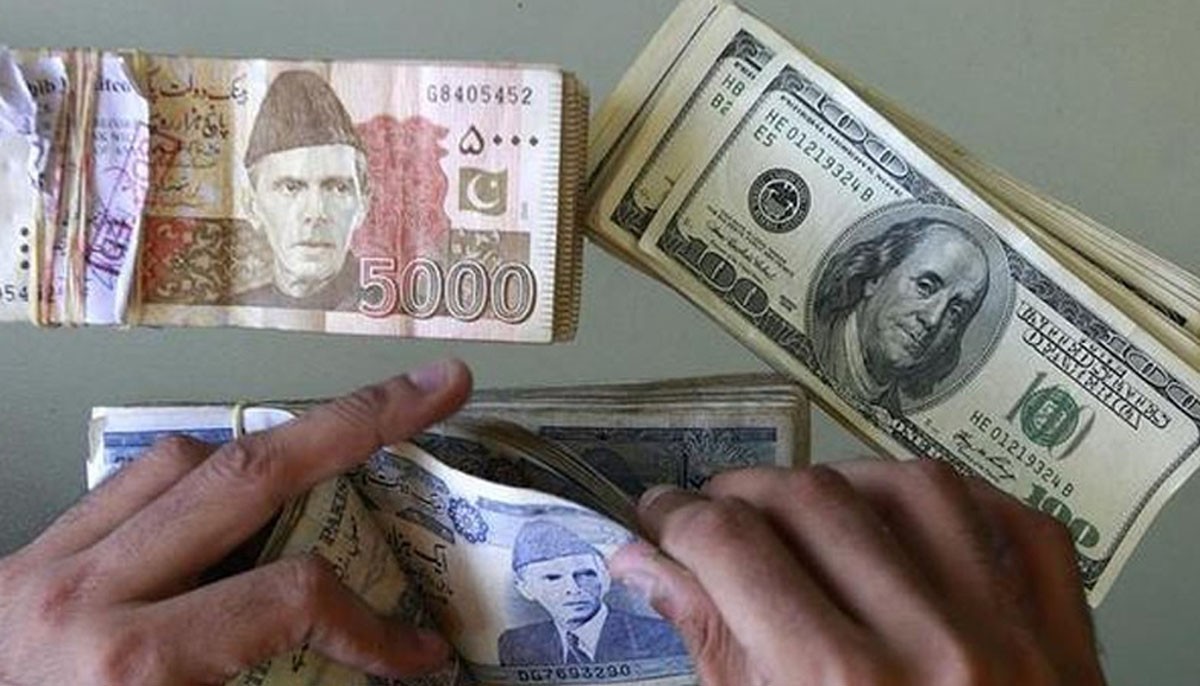As trading began on Monday, the Pakistani rupee maintained its upward trend versus the US dollar for the 12th straight session.
Around 10:40 a.m., the local currency was trading in the interbank market at 218.50 against the US dollar, up Rs. 1.42 from Friday’s close of Rs. 219.92.
Despite a drop in foreign exchange reserves and a downgrade of the country’s sovereign credit rating by Moody’s, the rupee kept rising versus the US dollar.
The Pakistani rupee, which has gained about 4% over the past week, is unlikely to depreciate from its present levels against the US dollar, according to traders and economists.
However, the State Bank of Pakistan (SBP) will be closely watched to determine if it would increase interest rates or maintain them at their current levels today (Monday).
During the previous week, the Pakistani rupee outperformed most other major currencies against the dollar.
In the interbank market on Friday, the rupee closed at 219.92 to the dollar, up 0.92% from its previous finish of 221.94.
The exporters were racing to sell dollars before the local currency strengthened more, the forex broker said, adding that “the tendency for the rupee is to keep going strong.” The market has enough stocks to meet importers’ demand, according to the statement.
The dealer claimed that the government appeared to have controlled speculative trading, which led to a drop in speculative activity.
The SBP’s foreign holdings decreased by $106 million to $7.9 billion in the week ending September 30. The reserves are sufficient to fund imports for 1.13 months.
Repayment of external debt, which includes Eurobond interest payments, is what caused the reserves to decrease.
The Pakistan Bureau of Statistics reports that in September, the trade deficit decreased 31% from the same month last year to $2.88 billion. Exports were $2.39 billion in September, down 1% from $2.41 billion in the same month last year. To $5.27 billion, imports decreased 20% from the previous year.
While this momentum might push the dollar as low as 200, Tresmark noted in a report that “anything below 210 will start affecting exports materially.” In terms of foreign exchange, “we continue to expect rupee appreciate to the 210/$ level.”
“Free subsidies to importers (via cheaper dollars) will also exacerbate the economic problems.So while the rupee can be shepherded to the 200 level, economically, it may not be viable, especially in the backdrop of regional currencies making all-time lows (INR touched 82.30/$, OPEC supported oil prices by cutting back on production and the real effective exchange rate, at 220/$, is around 105),” it added.
Most central banks have been intervening to support their currencies (and often in significant ways), but experts are concerned because the new finance minister has stated that strengthening the rupee to at least 200 per dollar level is his primary aim, the report said.
“While maintaining the benefits of a stable currency, they enquire as to who would discuss the more important topics of productivity, an enabling environment, fiscal room, and long-term reforms. They believe that this is only being done for show and immediate political gain because of this, it said.










